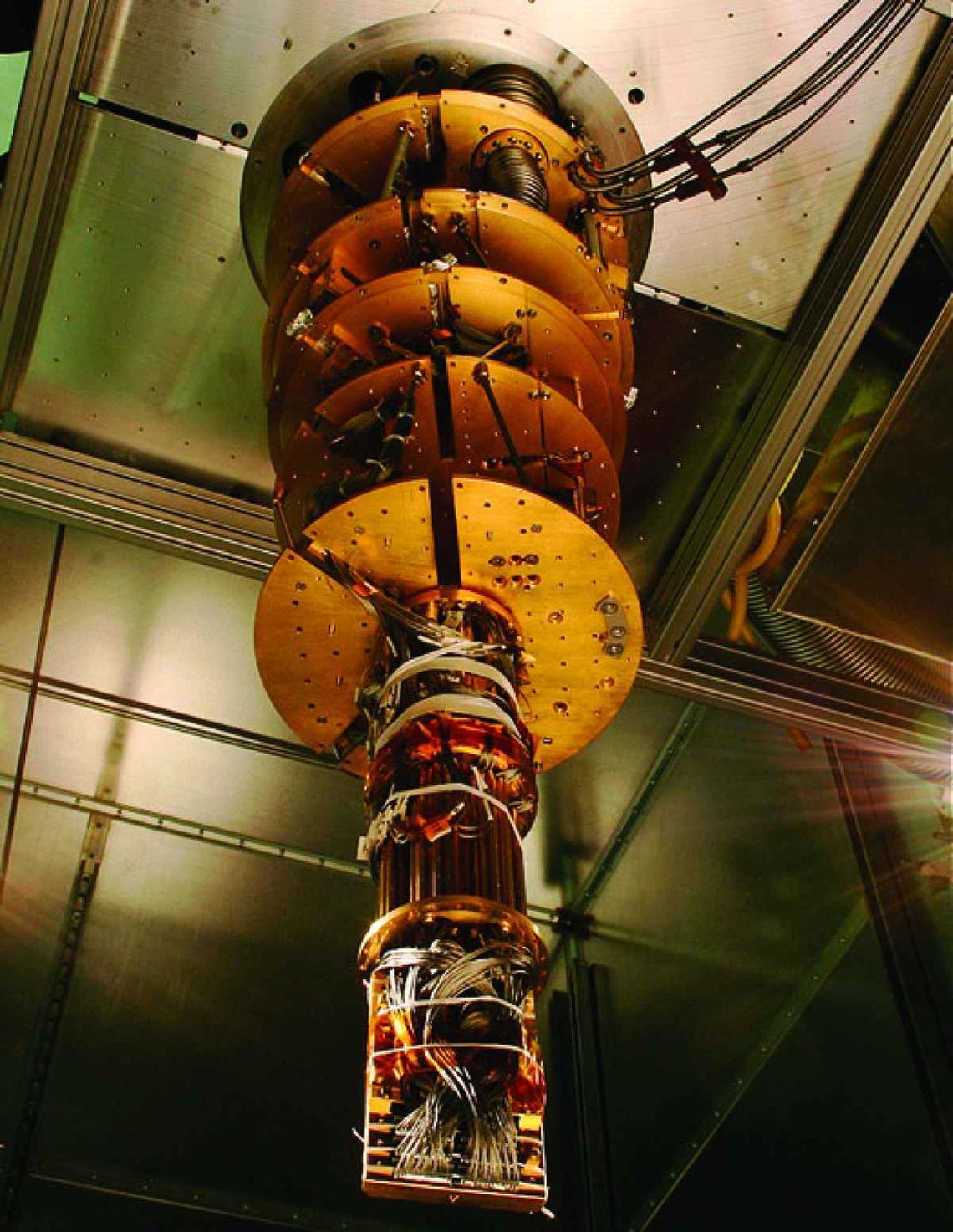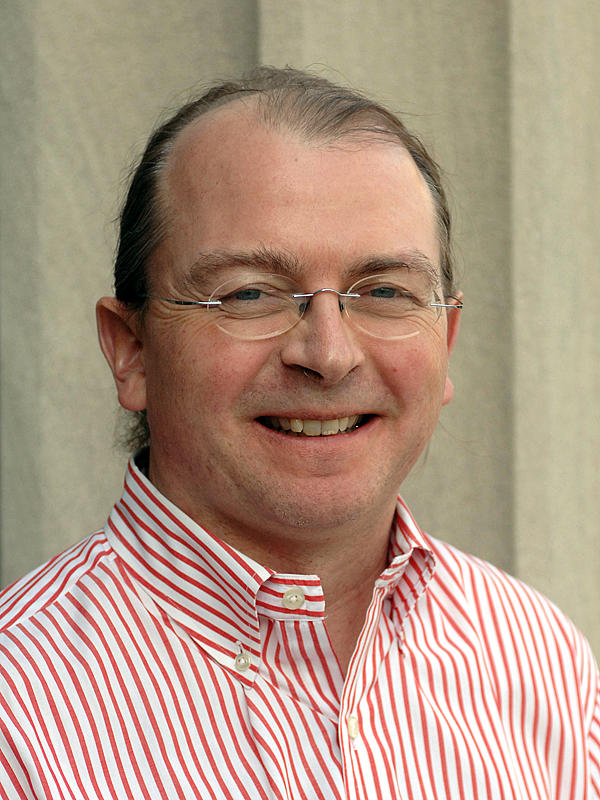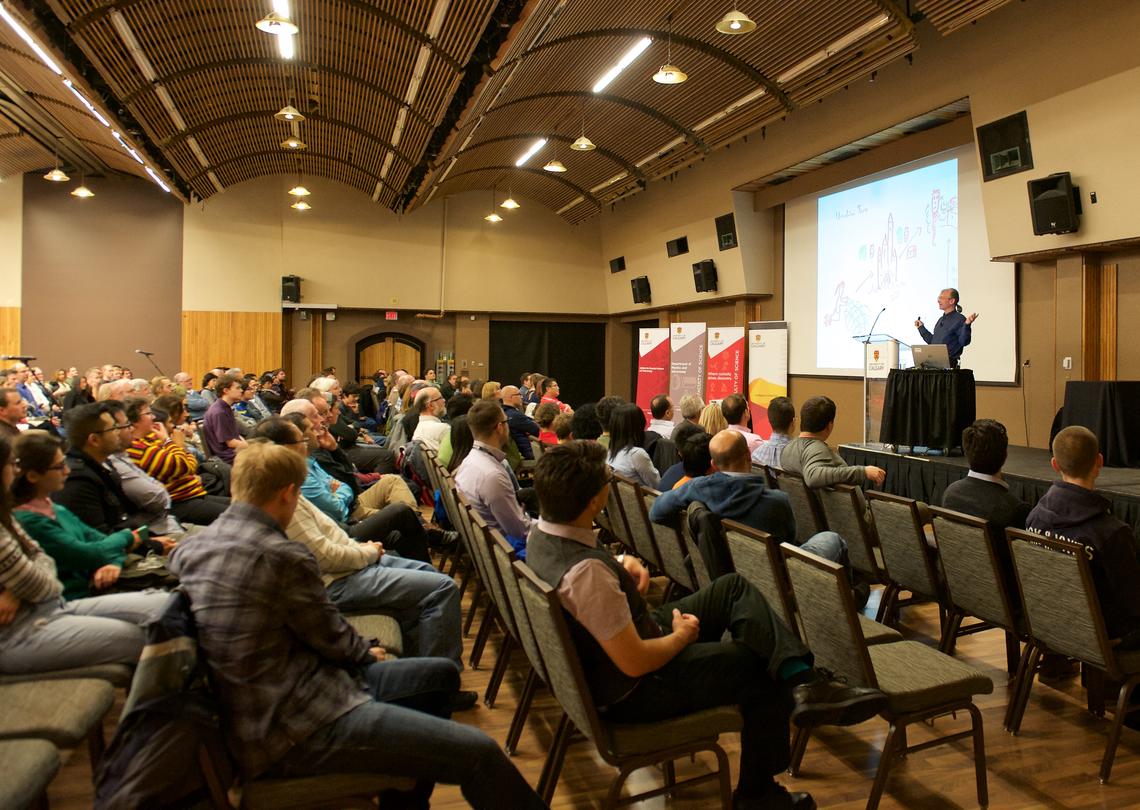Nov. 27, 2015
Visiting MIT professor explores science of teleportation and time travel

Quantum computers operate at the smallest, most fundamental levels allowed by physics.
Popular Science
Teleportation and time travel are often explored in popular culture from blockbuster movies to television series. The vast majority of people, however, have never witnessed these phenomena.
Seth Lloyd, a professor at the Massachusetts Institute of Technology (MIT) and speaker at last week's sold-out Institute for Quantum Science and Technology (IQST) Annual Quantum Public Lecture, has accomplished both in his laboratory. In fact, he claims that as hard as it may be to wrap our minds around these non-standard modes of transportation, the laws of physics allow, and even encourage, them.
"Seth Lloyd's delightful talk about exploiting quantum processes to overcome the flow time shows how quantum information processing could circumvent even the relentless flow of time," says Barry Sanders, director, IQST. The Annual Quantum Public Lecture has been IQST's hallmark event since 2010 bringing exciting speakers to campus to explore a range of quantum sciences and technologies.
Proposing the first technologically feasible design for quantum computer
A self-described "quantum mechanic," Lloyd has accomplished both teleportation and time travel at the subatomic level. He has spent his academic career working on applications of information to quantum-mechanical systems, and has performed seminal work in the fields of quantum computation and quantum communication, including proposing the first technologically feasible design for a quantum computer.
"Quantum computers work at the level of individual atoms, photons, and elementary particles, and try to coax them into performing computations for us," he says.
Time travel, he says, has a scientific basis allowed by general relativity and various quantum models, grounded in the "strange and counterintuitive" concept of quantum entanglement. Though it seems like the stuff of science fiction, time travel is allowed in Einstein's theory of general relativity. Time travel "is intrinsically paradoxical," says Lloyd, "but time travel paradoxes can be resolved by quantum teleportation."
Entanglement allows one to teleport a quantum system, even though measurement is destructive and incomplete. In recent years, experimentalists made quantum teleportation a reality, teleporting particles of light, or photons, and even larger stuff, like electrons or atoms, over distances which now range beyond a hundred kilometers.

Mechanical engineer Seth Lloyd was the featured speaker.
MIT News
Quantum mechanics opens doors to "funky" ways of getting from point A to B
However, Lloyd believes science may still be a long way from teleporting larger objects like bacteria or viruses, let alone humans — though quantum commuting is not out of the question.
Spacetime can possess closed time-like curves (like a black hole) that an object can enter in the future and exit in the past.
"Quantum mechanics is famously weird," Lloyd says, "and quantum weirdness opens up opportunities for funky methods of getting from point A to point B."
In 2009, Lloyd and his colleagues showed that the quantum mechanics of closed time-like curves was essentially the same as that of teleportation.
"To truly travel back in time, we need something like a black hole, or a closed time-like curve — a truly warped piece of space and time that curves back on itself and takes your photon back to the past," he says.
Only extremely tiny things have been sent backwards in time, so far
In their model, as an object disappears, the closed time-like curve effectively performs a measurement on it along with the curve's analog of Hawking radiation, called horizon radiation. Just as the effect of the measurement at the singularity of a black hole causes it to reappear outside the hole, the effect of the measurement at the entrance to the closed time-like curve causes the object to reappear at the exit to the curve in the past.
So far, only extremely tiny things, like photons, have been teleported and effectively sent backwards in time.
Although he can already count some groundbreaking accomplishments among his career highlights, Lloyd would like to see certain fundamental questions answered in his lifetime: What does indeed happen inside black holes? And how do quantum mechanics and gravity work together? Scientists have been trying and failing to reconcile them for a century, and Lloyd hopes someone will eventually develop a solid, provable theory.
"And of course," he says, "if their theory is right, it would be cool to try it out!"

Seth Lloyd speaks to a sold-out crowd about teleportation, time travel and escape from black holes.
Dave Brown, University of Calgary
